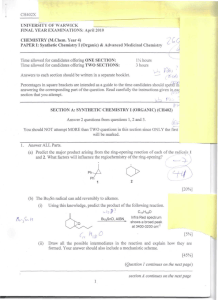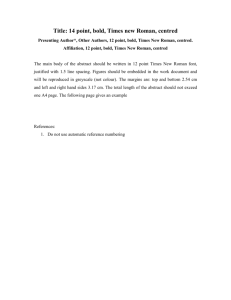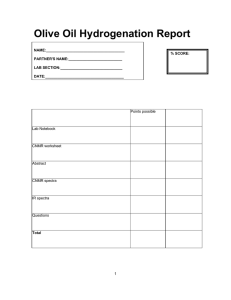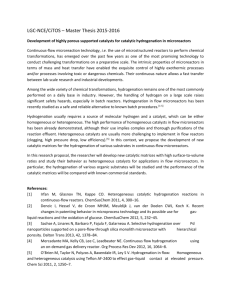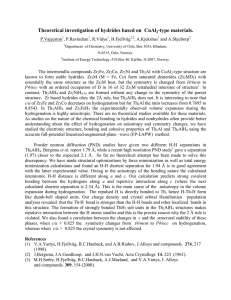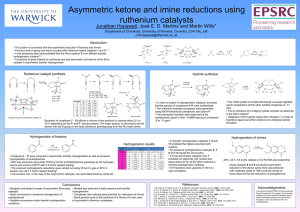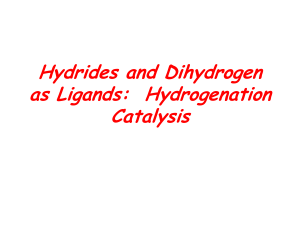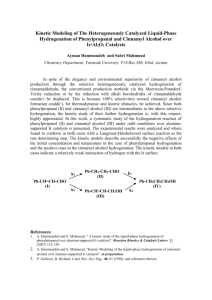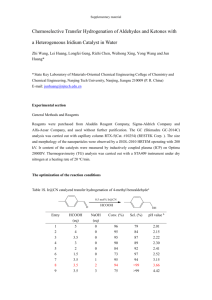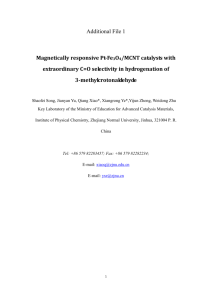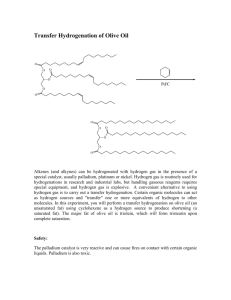GREEN hydrogenation of 2-Butyne-1,4-diol
advertisement
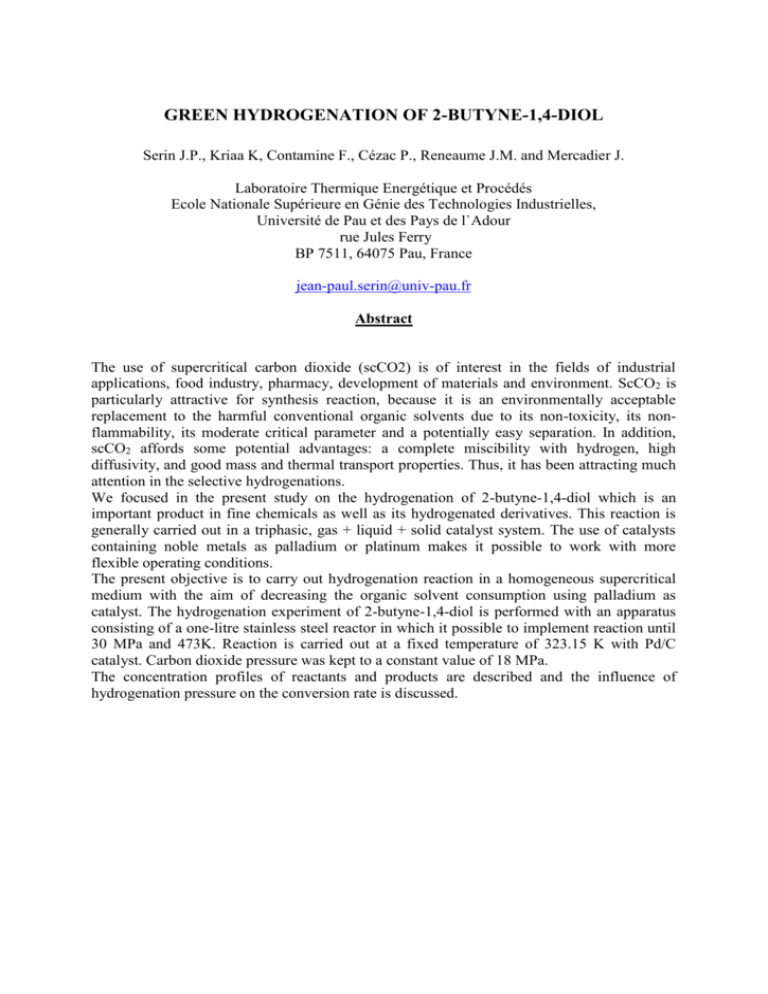
GREEN HYDROGENATION OF 2-BUTYNE-1,4-DIOL Serin J.P., Kriaa K, Contamine F., Cézac P., Reneaume J.M. and Mercadier J. Laboratoire Thermique Energétique et Procédés Ecole Nationale Supérieure en Génie des Technologies Industrielles, Université de Pau et des Pays de l`Adour rue Jules Ferry BP 7511, 64075 Pau, France jean-paul.serin@univ-pau.fr Abstract The use of supercritical carbon dioxide (scCO2) is of interest in the fields of industrial applications, food industry, pharmacy, development of materials and environment. ScCO2 is particularly attractive for synthesis reaction, because it is an environmentally acceptable replacement to the harmful conventional organic solvents due to its non-toxicity, its nonflammability, its moderate critical parameter and a potentially easy separation. In addition, scCO2 affords some potential advantages: a complete miscibility with hydrogen, high diffusivity, and good mass and thermal transport properties. Thus, it has been attracting much attention in the selective hydrogenations. We focused in the present study on the hydrogenation of 2-butyne-1,4-diol which is an important product in fine chemicals as well as its hydrogenated derivatives. This reaction is generally carried out in a triphasic, gas + liquid + solid catalyst system. The use of catalysts containing noble metals as palladium or platinum makes it possible to work with more flexible operating conditions. The present objective is to carry out hydrogenation reaction in a homogeneous supercritical medium with the aim of decreasing the organic solvent consumption using palladium as catalyst. The hydrogenation experiment of 2-butyne-1,4-diol is performed with an apparatus consisting of a one-litre stainless steel reactor in which it possible to implement reaction until 30 MPa and 473K. Reaction is carried out at a fixed temperature of 323.15 K with Pd/C catalyst. Carbon dioxide pressure was kept to a constant value of 18 MPa. The concentration profiles of reactants and products are described and the influence of hydrogenation pressure on the conversion rate is discussed.
